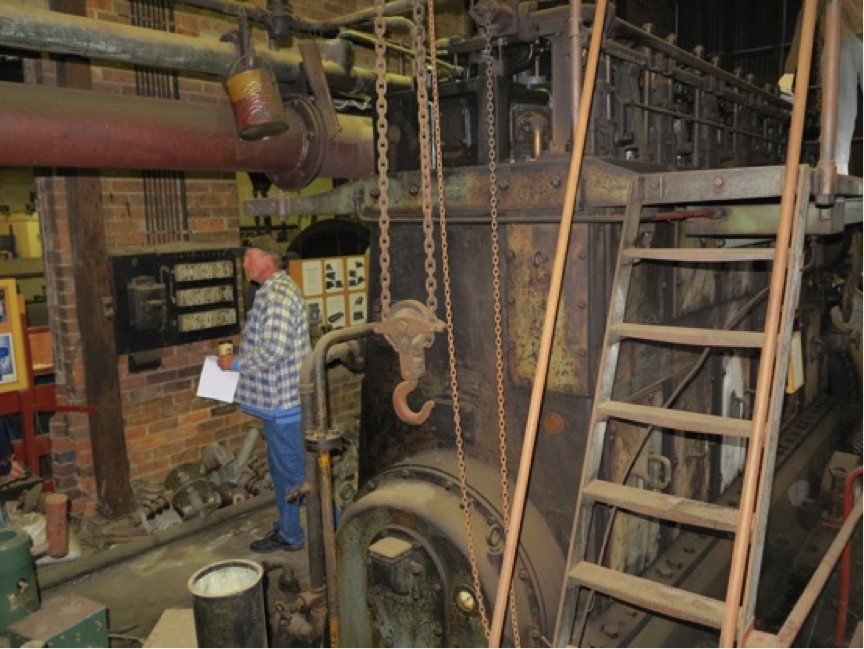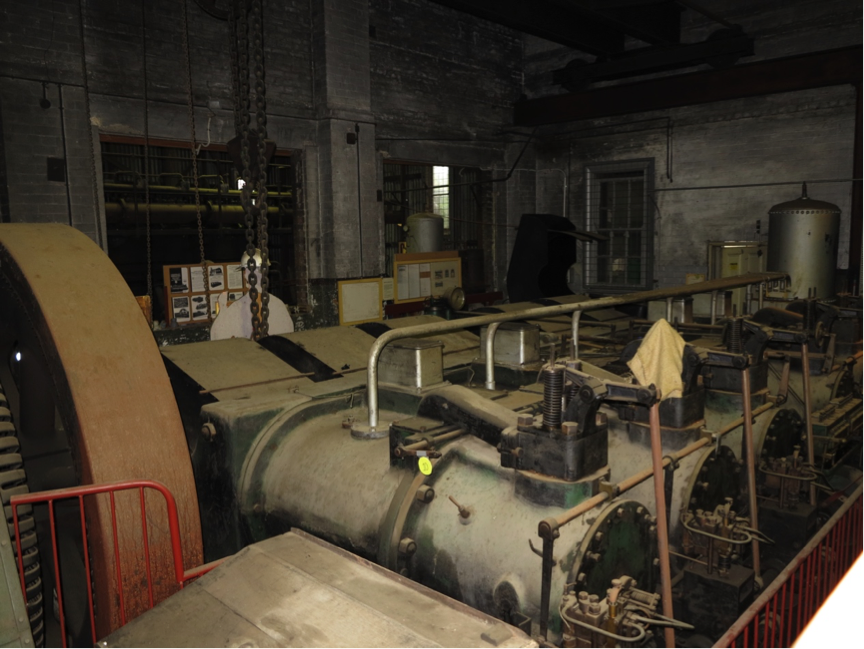Projects
Narromine Fowler Traction Engine No16163
This traction engine was built by Fowler in 1925 and is a model B6 road locomotive type. The engine was bequeathed to Narromine Council and after variously suffering the ignominy of a playground object and then extended storage Narromine Council has engaged NEHTC to bring the engine back to working condition. The work being undertaken is of a specialist nature and includes replacement of small sections of firebox, wheel and other bearings.
Links
www.narromine.nsw.gov.au/LiteratureRetrieve.aspx?ID=161886
Glen Innes Power House
The power house, located in central Glen Innes, was a municipal council enterprise to generate electricity. After a lengthy gestation period it was put into operation in 1922 using Ruston suction gas internal combustion engines. Suction gas is the term given to the gas given off when wood is burnt in closed vessel.
A major upgrade was made in 1930 when council installed a then state-of-the-art 600hp six cylinder Crossley-Premier oil (ie diesel) engine with matching alternator. In 1948 a V12 cylinder Paxman was installed and shortly after joining the North West County Council in 1952 a Bellis & Morcom vertical engine was transferred from Inverell to the Glen Innes facility.
A Vivian engine was later transferred from Moree and a National engine appeared from an unknown location. Up to this time the Glen Innes power house operated as a stand-alone generator with some feed-in from Tamworth via a new connection with Inverell.
The coal fired power station at Ashford came on line in 1957 after which time the Glen Innes facility was only used during periods of peak demand. It is believed that the wood burning retorts and single cylinder engines were scrapped in the middle 60’s and that the National and another large engine went the same way in the early 80’s.
The Crossley-Premier engine remained in use until 1984 at which time switch gear and connections to the grid were removed. Right up to this time the various men who operated the machinery were known as ‘Superintendent’ , ‘Engine driver’, and 'labourer'. Their names can be just discerned beside the northern access door as witness to the tradition of writing their names on starting work there.
In 1993 Ivan March lead a small band of helpers to open the generating station as a museum for public viewing. However, with the demise of the County Council 18 months later the facility was closed to the public and has remained so since.
Early in 2017 NEHTC negotiated access with Essential Energy, the current owner, for a viewing to ascertain the state of the historic plant and the possibility of becoming involved with the facility into the future. Below you can see a few snaps of NEHTC members with the huge engines.



Links
Paxman engines history
http://www.paxmanhistory.org.uk/
Land of the Beardies History House
NEHTC supports the local museum with it’s machinery collection and has brought rare machines such as a Blackstone crawler and Rumely Oil Pull tractor back to working condition.
https://www.beardieshistoryhouse.info/
Land of the Beardies History House Museum

Below is a clip of club member James Gresham starting and running the museum's 1919 Blackstone Crawler.
https://www.youtube.com/watch?v=v-xVZErC0gs
And here is a clip of the Rumley Oil Pull in action.
https://www.youtube.com/watch?v=LQGJNkuk6q4
Club member's projects
Many of our members drive interesting cars. Below is one member's blog covering efforts to re-engine an old Volvo.
